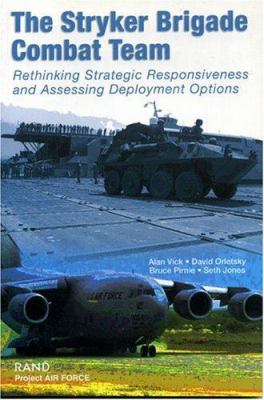
Book
|
The Stryker Brigade combat team : rethinking strategic responsiveness and assessing deployment options
Copies
9 Total copies, 9 Copies are in,
0 Copies are out.
Title
The Stryker Brigade combat team : rethinking strategic responsiveness and assessing deployment options
Digital Link
Authors
Subjects
Language
English
Published
Santa Monica, CA : Rand, 2002.
Publication Desc
xxvi, 138 p. : ill., maps ;
ISBN
0833032682
(pbk.)
LCCN
2002031870
Dimensions
cm.









